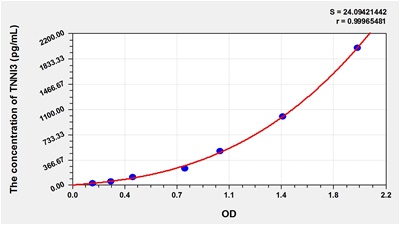Introduction
APPLICATION
This kit can be used to measure Lactate dehydrogenase (LDH) activity in tissues, serum (plasma), hydrothorax, culture cells, cell culture supernatants and other samples.
DETECTION SIGNIFICANCE
Lactate dehydrogenase (LDH or LD) is an enzyme found in nearly all living cells (animals, plants, and prokaryotes). LDH catalyzes the conversion of lactate to pyruvic acid and back, as it converts NAD+ to NADH and back. A dehydrogenase is an enzyme that transfers a hydride from one molecule to another. LDH is expressed extensively in body tissues, such as blood cells and heart muscle. Because it is released during tissue damage, it is a marker of common injuries and disease such as heart failure. Lactate dehydrogenase is composed of four subunits (tetramer). The two most common subunits are the LDH-M and LDH-H protein, encoded by the LDHA and LDHB genes, respectively. These two subunits can form five possible tetramers (isoenzymes): 4H, 4M, and the three mixed tetramers (3H1M, 2H2M, 1H3M). These five isoforms are enzymatically similar but show different tissue distribution: The major isoenzymes of skeletal muscle and liver, M4, has four muscle (M) subunits, while H4 is the main isoenzymes for heart muscle in most species, containing four heart (H) subunits.
DETECTION PRINCIPLE
Coenzyme I as a hydrogen carrier, LDH catalyzes the production of pyruvic acid from lactic acid, and pyruvic acid react with pyruvic acid to form pyruvate dinitrophenylhydrazone which is brownish red in alkaline solution. The depth of the color is proportional to the concentration of pyruvic acid. The activity of LDH can be measured indirectly by measuring the OD value at 450 nm.
This kit can be used to measure Lactate dehydrogenase (LDH) activity in tissues, serum (plasma), hydrothorax, culture cells, cell culture supernatants and other samples.
DETECTION SIGNIFICANCE
Lactate dehydrogenase (LDH or LD) is an enzyme found in nearly all living cells (animals, plants, and prokaryotes). LDH catalyzes the conversion of lactate to pyruvic acid and back, as it converts NAD+ to NADH and back. A dehydrogenase is an enzyme that transfers a hydride from one molecule to another. LDH is expressed extensively in body tissues, such as blood cells and heart muscle. Because it is released during tissue damage, it is a marker of common injuries and disease such as heart failure. Lactate dehydrogenase is composed of four subunits (tetramer). The two most common subunits are the LDH-M and LDH-H protein, encoded by the LDHA and LDHB genes, respectively. These two subunits can form five possible tetramers (isoenzymes): 4H, 4M, and the three mixed tetramers (3H1M, 2H2M, 1H3M). These five isoforms are enzymatically similar but show different tissue distribution: The major isoenzymes of skeletal muscle and liver, M4, has four muscle (M) subunits, while H4 is the main isoenzymes for heart muscle in most species, containing four heart (H) subunits.
DETECTION PRINCIPLE
Coenzyme I as a hydrogen carrier, LDH catalyzes the production of pyruvic acid from lactic acid, and pyruvic acid react with pyruvic acid to form pyruvate dinitrophenylhydrazone which is brownish red in alkaline solution. The depth of the color is proportional to the concentration of pyruvic acid. The activity of LDH can be measured indirectly by measuring the OD value at 450 nm.

%20Colorimetric%20Assay%20Kit/E-BC-K046-SC.png)
%20Colorimetric%20Assay%20Kit/E-BC-K046-SC2.png)
%20Colorimetric%20Assay%20Kit/E-BC-K046-AE.png)
%20Colorimetric%20Assay%20Kit/E-BC-K046-SC.png)
%20Colorimetric%20Assay%20Kit/E-BC-K046-SC2.png)
%20Colorimetric%20Assay%20Kit/E-BC-K046-AE.png)






.png)